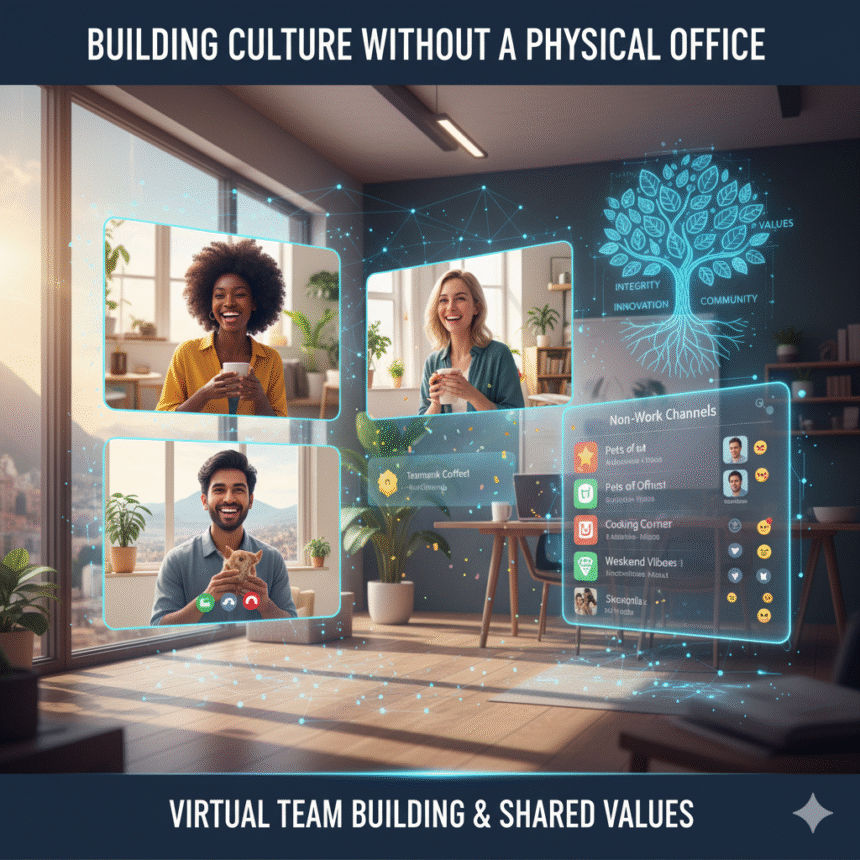The shift to widespread remote work has undeniably changed the professional landscape. One of the most significant challenges, and indeed opportunities, lies in building culture without a physical office. When spontaneous hallway conversations and shared lunch breaks are no longer the norm, how do organizations maintain a cohesive identity and ensure that their company values genuinely resonate with every team member? This article explores the innovative strategies and best practices for cultivating a thriving remote culture, emphasizing intentional virtual team building, robust communication, and a clear articulation of shared values to enhance the overall employee experience in a distributed world.
- Redefining Company Culture in a Remote-First World
- Anchoring to Company Values
- Intentional Virtual Team Building
- 1. Beyond the Work Call: Creative Social Engagements
- 2. Facilitating Cross-Functional Connections
- 3. Asynchronous Connection Points
- Enhancing the Remote Employee Experience
- The Role of Leadership in Shaping Remote Culture
- Conclusion
Redefining Company Culture in a Remote-First World
Traditionally, company culture was often intrinsically linked to a physical space – the office layout, the breakroom banter, the after-work happy hours. With remote work, that tangible anchor disappears, forcing organizations to redefine what culture truly means. It’s no longer about foosball tables or free snacks, but about shared beliefs, behaviors, and the overall feeling employees have about their workplace.
In a remote environment, culture is built on:
- Trust and Autonomy: Empowering employees to manage their work and schedules.
- Transparent Communication: Ensuring everyone is informed and heard, regardless of location.
- Inclusion and Belonging: Making sure every team member feels valued and connected.
- Shared Purpose: A clear understanding of the company’s mission and how individual contributions make a difference.
- This redefinition means that HR and leadership must be more deliberate than ever in shaping the remote employee experience, actively designing interactions and processes that embody the desired culture.
Anchoring to Company Values
Without the subtle cues of an office environment, explicitly articulating and living by company values becomes paramount. Values act as the guiding principles for decision-making and behavior, providing a moral compass for a distributed team.
1. Articulate and Communicate Values Clearly
Values shouldn’t just be words on a website; they need to be woven into the fabric of the organization.
Regular Reinforcement: Discuss values in all-hands meetings, team check-ins, and performance reviews.
Stories and Examples: Share examples of employees living the values. This makes them tangible and relatable.
Visible Reminders: Use digital backgrounds, internal communication channels, and onboarding materials to keep values front and center.
2. Integrate Values into Every Process
True integration means that values influence recruitment, performance management, and reward systems.
Hiring for Values-Fit: Assess candidates not just on skills, but on how well their personal values align with the company’s.
Performance Reviews: Incorporate values-based feedback into performance evaluations, recognizing behaviors that exemplify the culture.
Recognition Programs: Create systems that reward employees who consistently demonstrate core company values.
When values are genuinely embedded, they provide a powerful, unifying force, ensuring that despite geographical distance, everyone is pulling in the same direction towards a shared purpose.
Intentional Virtual Team Building
Spontaneous social interactions are rare in a remote setting, so virtual team building must be intentional and well-planned. The goal is to create opportunities for connection that foster camaraderie and strengthen relationships.
1. Beyond the Work Call: Creative Social Engagements
Virtual Coffee Breaks/Lunches: Schedule informal, optional video calls where teams can chat about non-work topics.
Online Games & Activities: Organize virtual game nights, trivia, or even online escape rooms.
Virtual Celebrations: Mark birthdays, anniversaries, and company milestones with digital celebrations.
“Walk and Talk” Meetings: Encourage one-on-one calls to be taken during a walk, offering a change of scenery and promoting well-being.
2. Facilitating Cross-Functional Connections
Remote work can sometimes silo teams. Encourage interactions across departments.
Virtual “Lunch and Learns”: Have different teams present on their projects or areas of expertise.
Cross-Functional Projects: Create opportunities for employees from different departments to collaborate on shared initiatives.
3. Asynchronous Connection Points
Not all connection needs to happen in real-time.
“Water Cooler” Channels: Dedicate communication channels for non-work discussions, like sharing hobbies, pet photos, or weekend plans.
Team Newsletters: Regularly share team updates, personal news (with consent), and recognition to keep everyone informed and connected.
Enhancing the Remote Employee Experience
A strong remote culture directly contributes to a positive employee experience, leading to higher engagement, retention, and productivity.
1. Robust Communication Strategies
Communication is the bedrock of remote success.
Clear Communication Channels: Define which tools are for what purpose (e.g., Slack for quick chats, email for formal announcements, project management tools for task updates).
Regular Check-ins: Managers should schedule consistent one-on-one meetings with team members to discuss work, well-being, and career development.
All-Hands Meetings: Hold regular company-wide virtual meetings to share updates, celebrate successes, and allow Q&A with leadership. Use video to maximize connection.
Documentation: Create a centralized, accessible knowledge base for policies, procedures, and company information to ensure everyone has the resources they need.
2. Prioritizing Inclusion and Equity
Ensuring every remote employee feels included is vital.
Equitable Meeting Practices: Design virtual meetings so remote participants have an equal voice and visibility, using video where possible and actively soliciting input.
Time Zone Sensitivity: Schedule meetings to accommodate different time zones as much as possible, and record meetings for those who cannot attend live.
Diverse Perspectives: Actively seek out and value diverse perspectives, creating a safe space for all voices to be heard.
3. Investing in Well-being
Remote work can blur the lines between professional and personal life, leading to burnout.
Promote Work-Life Balance: Encourage employees to take breaks, set boundaries, and disconnect after work hours. Leaders should model these behaviors.
Mental Health Support: Provide access to mental health resources, such as Employee Assistance Programs (EAPs) or wellness apps.
Flexibility: Continue to offer flexibility in schedules where possible, respecting individual needs and preferences.
The Role of Leadership in Shaping Remote Culture
Leaders are the primary architects and custodians of remote culture. Their actions, communication, and commitment directly impact the success of a distributed team.
Lead by Example: Leaders must embody the company values and demonstrate the desired behaviors for remote work.
Be Visible and Accessible: Even virtually, leaders need to be present, engage with their teams, and make themselves available for questions and concerns.
Empower Managers: Equip front-line managers with the training and tools they need to build strong, engaged remote teams. This includes training on virtual communication, empathetic leadership, and performance management in a distributed setting.
Solicit Feedback: Regularly ask for feedback on the remote work experience and be prepared to adapt strategies based on employee input.
Conclusion
Building a vibrant and cohesive culture without a physical office is not only possible but essential for thriving in the remote work era. It requires a deliberate, strategic, and human-centric approach. By firmly anchoring the organization to its company values, investing in intentional virtual team building, and prioritizing robust communication to enhance the employee experience, companies can cultivate a strong remote culture that fosters engagement, productivity, and a profound sense of belonging. The absence of a physical space simply means that culture must be built on the bedrock of shared purpose, mutual respect, and authentic connection, proving that truly great workplaces are defined not by their walls, but by their people and their shared spirit.











